Best headless CMS: The complete buyer’s guide in 2025
Looking for the best headless CMS in 2025? Our buyer’s guide covers leading platforms, key features, and what to consider before making your choice.
Written by Lucie Simonova

Looking for the best headless CMS in 2025? Our buyer’s guide covers leading platforms, key features, and what to consider before making your choice.
Written by Lucie Simonova

The best headless CMS isn’t one-size-fits-all. The right choice depends on your company’s size, technical resources, budget, and specific use cases. Depending on whether you’re a fast-scaling startup or an enterprise with global operations, selecting the right system will shape how efficiently your teams deliver content and how well your customers experience your brand.
A headless CMS is at the core of many organizations’ digital transformation. By separating content from presentation, organizations can power websites, apps, and new channels yet to emerge, all from a single content hub. According to Market Research Future, the headless CMS software market is expected to grow from $3.94 billion in 2025 to $22.28 billion by 2034. That’s an average yearly growth rate of about 21%, showing how quickly businesses are moving towards headless architecture.
This guide is written for:
Here’s what you’ll get: a complete breakdown of the meaning of headless CMS, benefits, challenges, evaluation criteria, and real-world headless CMS examples. We’ll compare leading headless CMS platforms and headless CMS solutions, explore use cases like omnichannel content delivery, localization, e-commerce and personalization, and highlight what makes the top headless CMS systems stand out in 2025.
By the end, you’ll be equipped to identify the best headless CMS for your organization’s unique needs and understand why some are considered top-rated headless CMS for commerce while others excel in enterprise content orchestration.
A headless CMS is a content management system that separates content from design. Instead of being tied to a single website or template, the content is stored in a central hub and delivered through Application Programming Interfaces (APIs) to any channel. This allows a single piece of content to be used and reused in many different places: websites, apps, digital kiosks, and more.
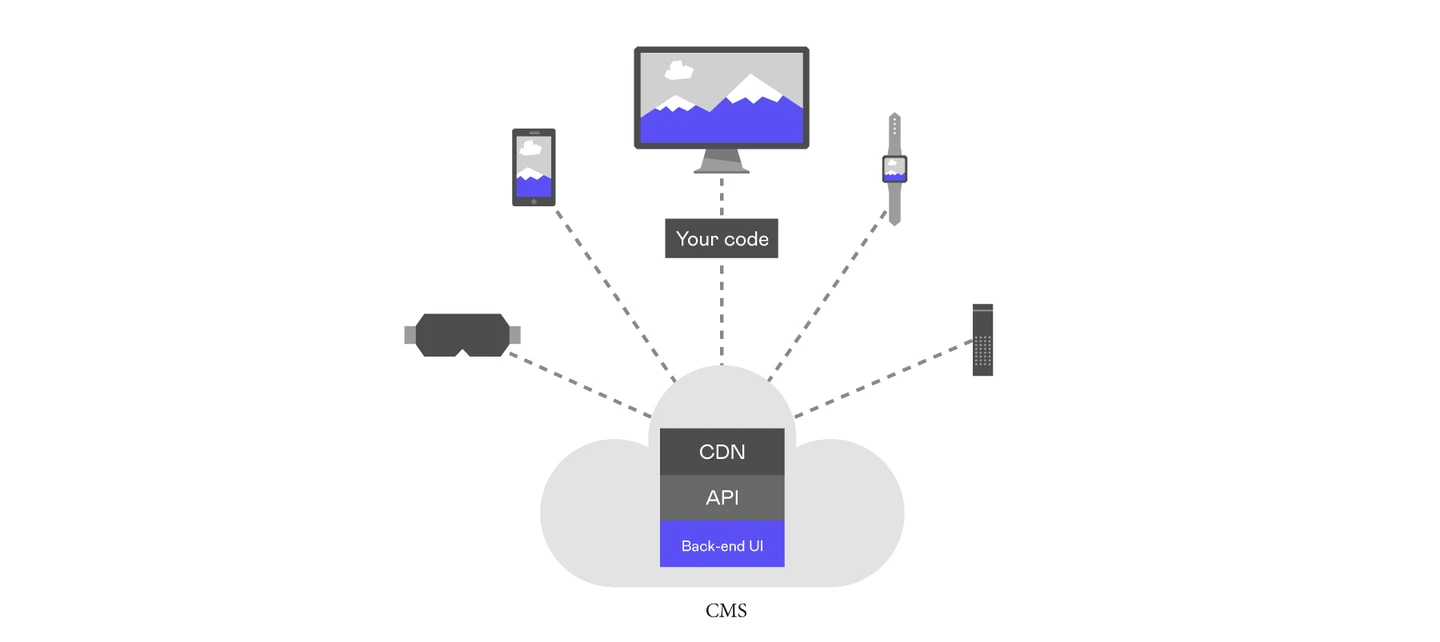
In 2025, digital experiences need to reach more channels than ever, such as web, mobile, social, connected devices, and beyond. A headless CMS makes this possible by giving organizations one place to manage content and the flexibility to deliver it anywhere. This helps teams move faster, keep content consistent, and adapt to new technologies as they emerge.
Choosing the right type of content management system depends on your team’s goals, resources, and digital strategy. A clear headless CMS comparison can help you understand which system aligns best with your needs, whether you are evaluating headless CMS vs. traditional CMS or headless CMS vs. decoupled CMS. We will take a look at traditional, hybrid, and headless CMS pros and cons to make your headless CMS evaluation easier.
Here’s how headless CMS, traditional CMS, and hybrid CMS compare across key factors.
Pros: Future-proof, works with modern stacks, excellent for omnichannel strategies.
Cons: Requires developer resources to build front ends.
Pros: Easier for non-technical users, can be faster to set up.
Cons: Less flexible, harder to adapt to new channels, and can often lead to content silos. Headless CMS vs. monolithic CMS evaluations often highlight these limitations in modern digital strategies.
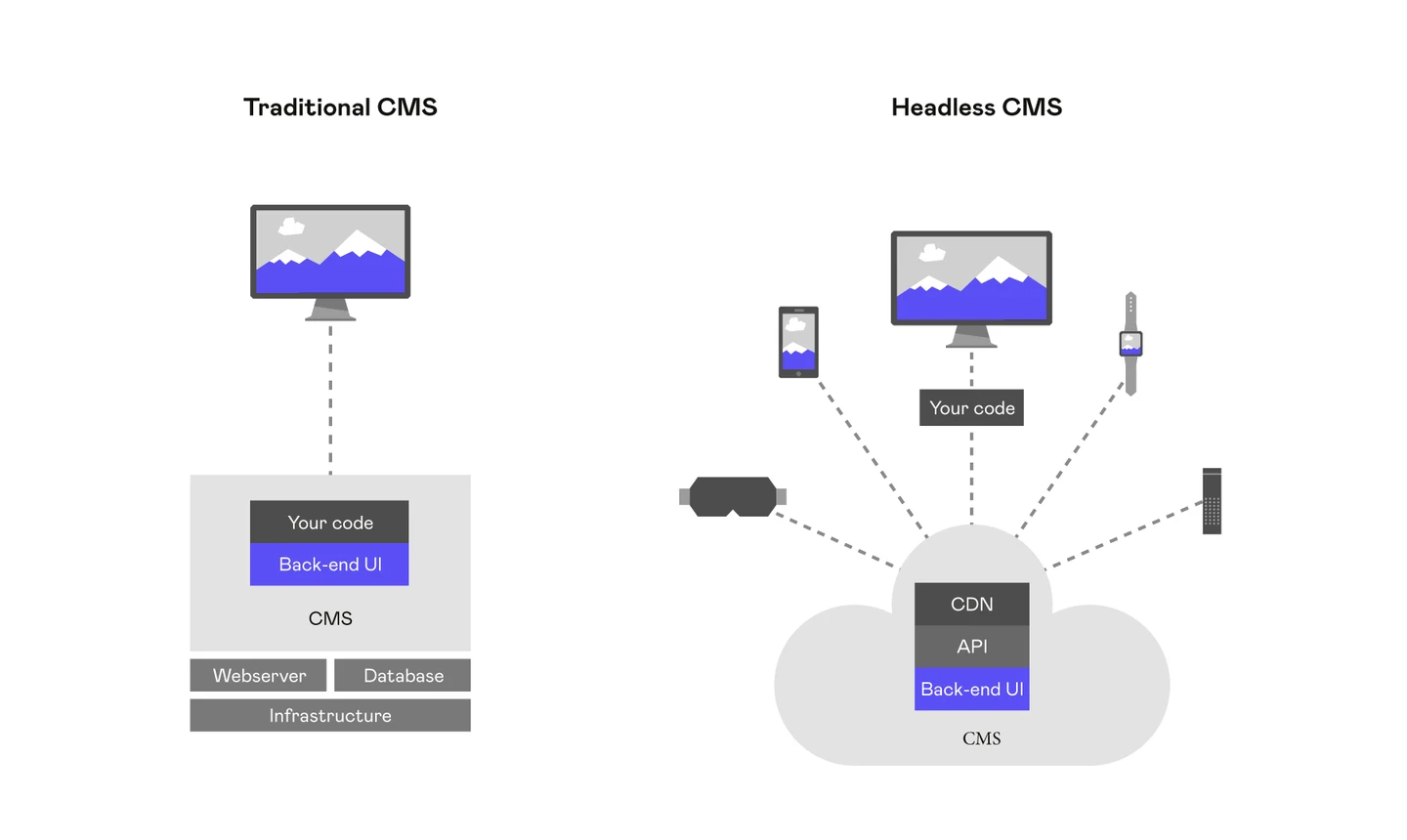
Pros: Balance of editor-friendliness and flexibility.
Cons: Can become complex, not as scalable or API-first as a true headless approach.
Understanding the headless CMS benefits helps explain why headless CMS is becoming the standard for digital-first organizations. Below are the main advantages of headless CMS, including omnichannel content delivery, scalability, content reusability, or personalization.
A traditional CMS usually limits you to one channel, most often a website. With headless CMS architecture, content is stored in a hub separately from the design, which means you can publish the same content to a website, a mobile app, a smartwatch, a voice assistant, or even digital billboards. Today, business audiences are everywhere, so the real value is being able to deliver consistent messages across every customer touchpoint, present and future.

Developers often feel boxed in by the rigid templates of a traditional CMS. A headless CMS for developers removes those limits by allowing them to work with any programming language or framework, React, Vue, Next.js, or whatever the team prefers. This freedom speeds up development, and it also means teams can adopt the latest tools without being tied to a vendor’s stack. It’s one reason headless CMS platforms are so appealing to technical teams.
A headless CMS for websites enables faster load times by supporting server-side rendering, static site generation, and optimized APIs. Faster websites perform better in search rankings and keep users from bouncing. The separation of content and design also means SEO specialists can work on structured content without breaking layouts, creating a cleaner workflow that benefits everyone.
Modern headless CMS solutions also make teamwork easier. Marketers can set up approval workflows, editors can assign tasks, and developers can integrate different tools. Instead of passing files around by email, teams work in one shared hub. For enterprises, this streamlines collaboration across regions and departments, making a headless CMS for enterprise a true central content engine.
One of the strongest headless CMS benefits is how well it scales. With headless CMS systems built on microservices and cloud-native technology, organizations can handle tons of visitors, spin up new sites for different markets, and expand without major rebuilds. For global brands, a well-chosen headless CMS for enterprise makes sure content is reliable, secure, and compliant, no matter how fast the business grows.
If you think of content as building blocks, with a headless approach, you can create reusable components that can be slotted into websites, mobile apps, or marketing campaigns. Using taxonomies and modular design, updates to one block automatically apply everywhere it’s used. This is one of the clearest advantages of headless CMS: less duplication, fewer errors, and consistent messaging across all channels.
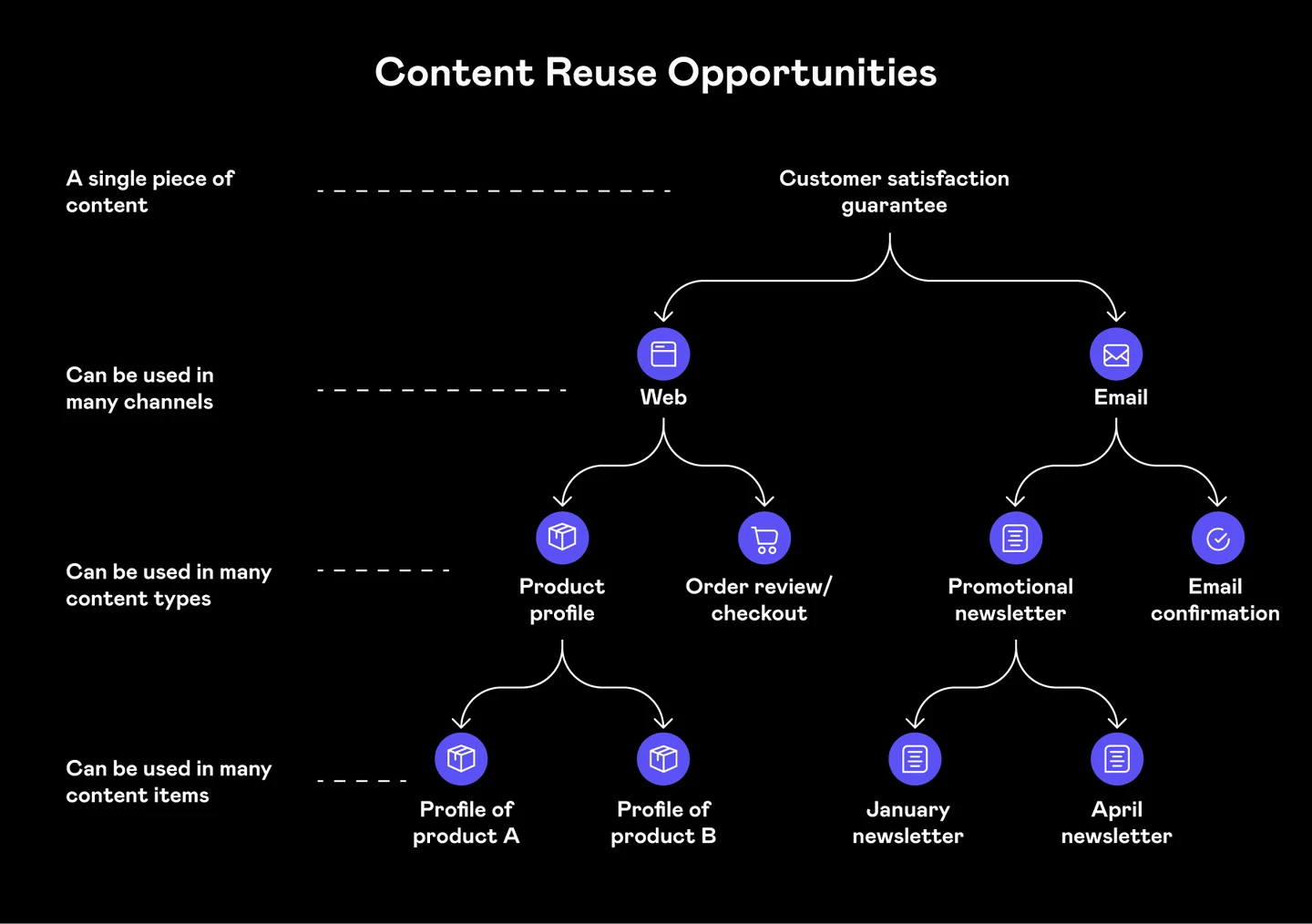
Customers nowadays expect more than generic content: they want recommendations, offers, and messages that feel tailored to them. Many headless CMS platforms now integrate with AI tools to deliver personalized experiences in real time. For example, a headless CMS for ecommerce can show different product recommendations to different shoppers based on browsing history. For businesses, this kind of personalization at scale builds stronger customer relationships and drives growth.
With so many headless CMS platforms on the market, finding the right one can feel tough. The best headless CMS for your business depends on your team size, budget, and what you need the system to do. To help you narrow down the options, here’s a buyer’s checklist of what to evaluate.
Marketers and editors will use your chosen CMS every day. Look for clear, intuitive interfaces, content previews, and workflow tools like approvals and versioning, as these are all features that will impact team productivity on a daily basis. Here’s a list of editorial features to look out for:
A strong API is the backbone of any headless CMS architecture. Some headless CMS systems rely on REST APIs, while others support GraphQL for more flexible queries. Some even offer both types of API. For teams, this choice affects performance, developer experience, and how quickly content reaches end users. If your team values flexibility, this is a key factor in the advantages of headless CMS compared to traditional setups.
Growing organizations need a CMS that won’t slow them down. Whether you’re a startup preparing for growth or a global brand, check for uptime guarantees (SLAs) and cloud-native scalability. A headless CMS for enterprise should handle traffic spikes, multiple regions, and multilingual sites without extra effort.
For industries like healthcare, finance, or retail, security is non-negotiable. The top headless CMS vendors provide enterprise-grade security features like:
Safeguard your brand with enterprise-grade security and governance. Explore our Trust Center.
If you’re considering a headless CMS for ecommerce, make sure it integrates smoothly with platforms like Shopify, BigCommerce, or custom cart systems. For enterprises, look at connections to DAMs (Digital Asset Management), CRMs, analytics tools, and personalization engines. These integrations turn a CMS into a complete digital experience hub, and they are one of the most practical headless CMS solutions for modern businesses.
Licensing models can vary, so compare pricing tiers carefully. Avoid surprises by asking about limits, add-ons, and scaling costs upfront. You can also use a total cost of ownership calculator.
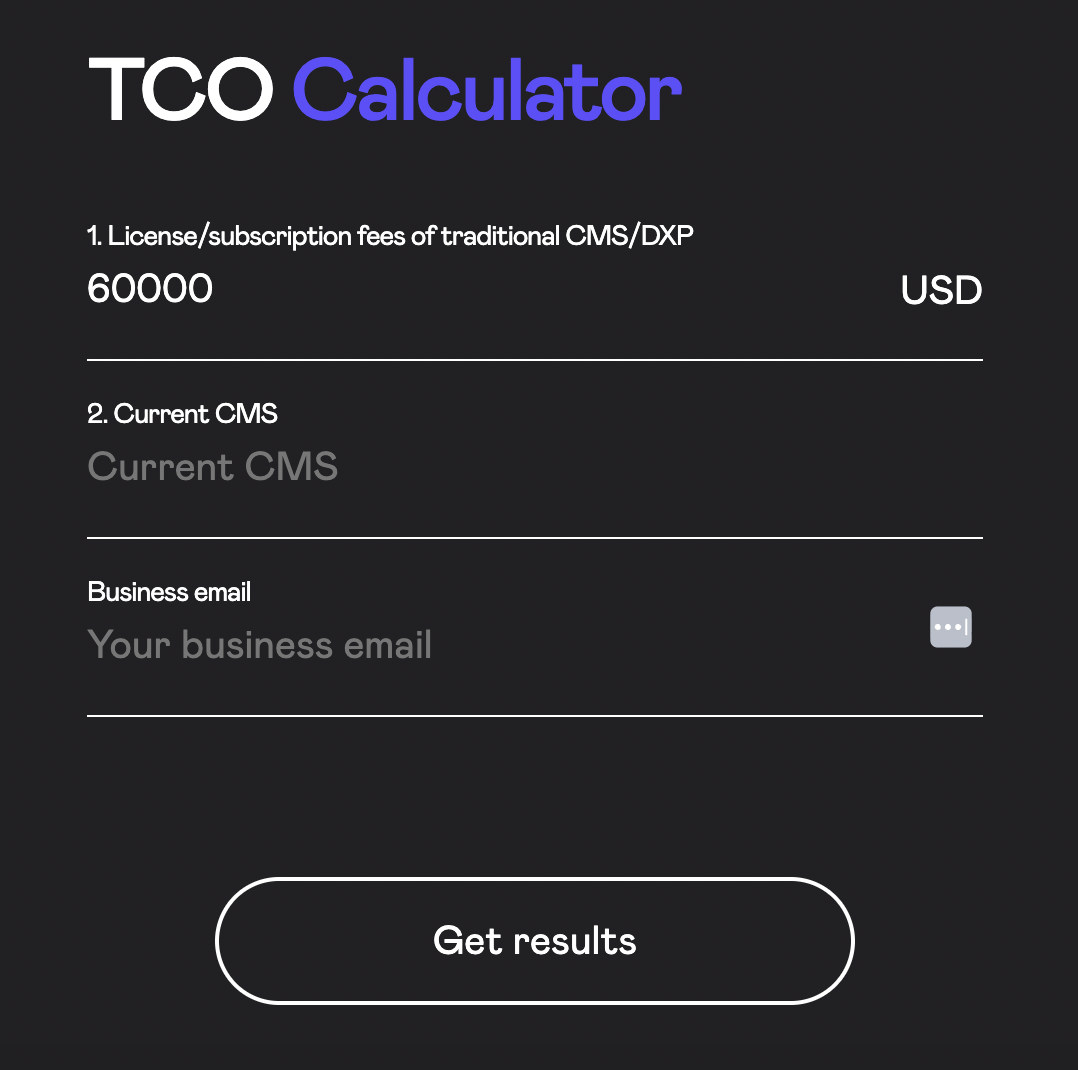
The best headless CMS vendors offer 24/7 assistance, onboarding, and documentation. A strong developer community is equally valuable, especially if your team plans to build custom front ends. Choosing a vendor with an active community means faster answers and a wealth of knowledge to learn from.
Different teams care about different things when evaluating different headless CMS examples. Here’s what to prioritize depending on the role:
For marketers
Marketers should look for a CMS that makes editing simple and intuitive. Features like drag-and-drop content blocks, visual page builders, and live previews reduce reliance on developers. A good headless CMS for marketers ensures that campaigns, product pages, and updates can be launched quickly without bottlenecks. It should also support collaboration with tools like task management, assignments, and content calendars to keep teams aligned.
For developers
When evaluating a headless CMS, developers should focus on the quality of the developer experience. Clear, well-structured documentation and robust SDKs make integration smoother and speed up builds. Look for API-first platforms that support both REST and GraphQL, as having both options ensures flexibility for different project requirements and development styles. Starter projects and active developer communities are also a factor to consider.
For engineering managers
Engineering leaders need to think about the bigger picture: scalability, governance, and long-term stability. Cloud-native headless CMS architecture, role-based access controls, and strong monitoring tools make it easier to manage large teams and high traffic.
For enterprises
For enterprises, the priorities go beyond day-to-day publishing. Compliance with regulations (GDPR, HIPAA, ISO), guaranteed uptime through robust SLAs, and reliable security are non-negotiable. Multi-language and localization support are equally critical for global organizations. Choosing a headless CMS for enterprise with these features makes sure content can be delivered securely, consistently, and in every market.
Below, we review some of the top headless CMS options, including their features and pros and cons, so you can see which might be the best headless CMS for your business.
Kontent.ai is a cloud-native headless CMS built to simplify complex content operations while scaling for future growth. Unlike many platforms that lean heavily toward either developers or marketers, Kontent.ai is designed to support a wide range of audiences, website types, and use cases.
Its flexibility makes it suitable for marketers, developers, product teams, and enterprise organizations alike, delivering structured content efficiently across multiple channels. This balance of usability and power means organizations don’t have to compromise between editor-friendly workflows and enterprise-grade governance.
In addition, AI-accelerated content management speeds up creation, editing, and personalization, while strong customer support and onboarding resources help teams realize value faster.
Key features:
Best for: Organizations that need a flexible, scalable headless CMS for websites, ecommerce, and enterprise content management. Especially suited for enterprises managing multiple teams, brands, and regions, where governance and consistency are critical.
Pros: Highly adaptable for different team roles and project types, strong enterprise governance, and robust support for omnichannel content delivery. Bridges the gap between marketers and developers, reduces bottlenecks, and future-proofs content strategy with AI-driven capabilities.
Cons: Advanced features may require onboarding and configuration to fully leverage. However, dedicated support and clear documentation help shorten the learning curve.
Pricing: Subscription-based pricing tailored to usage, team size, and features; scalable from smaller teams to large enterprises. Transparent tiers ensure organizations only pay for what they need, with room to grow as requirements expand.
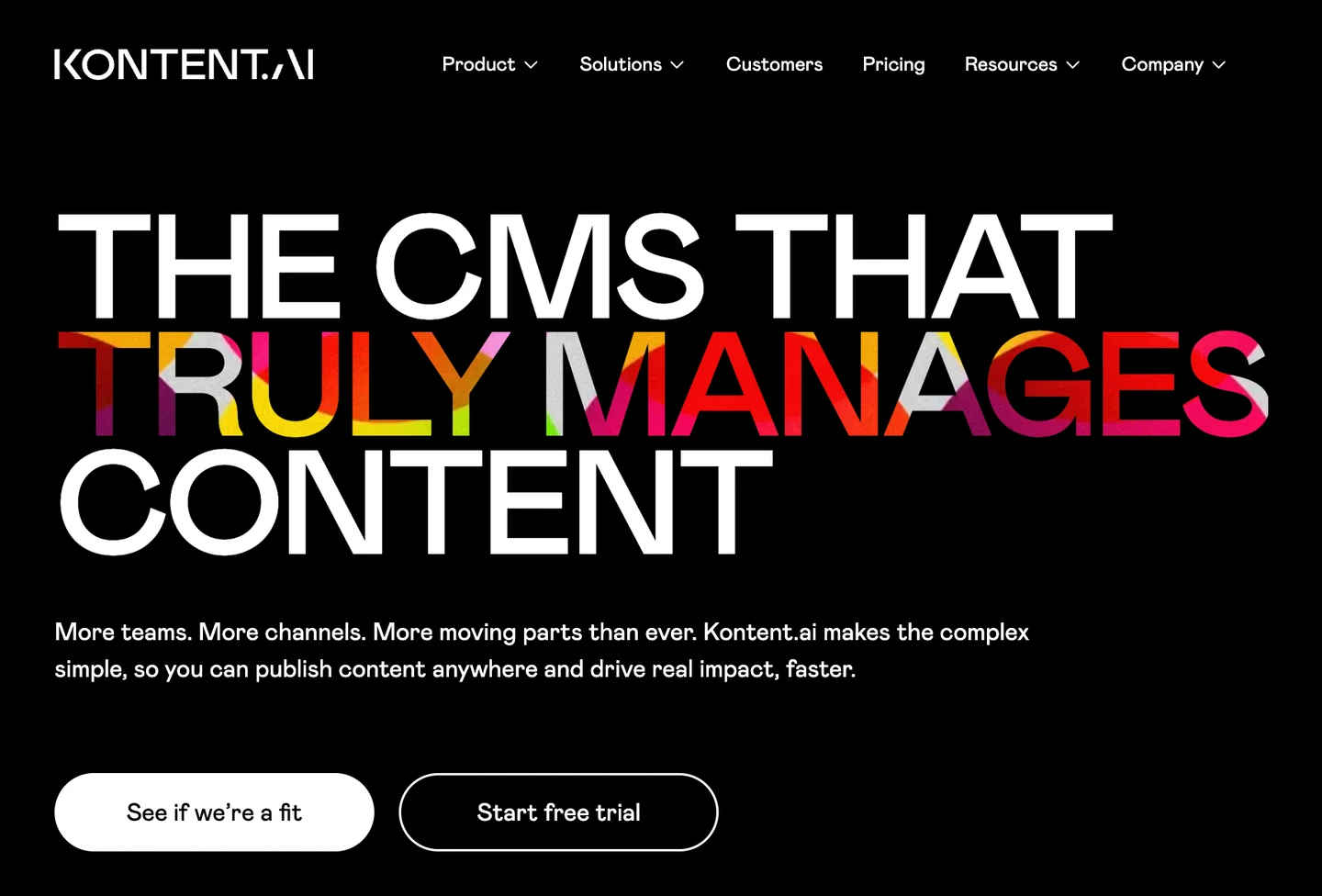
Strapi is an open-source headless CMS that appeals to developer-heavy teams. It can be a good fit for organizations that want full control over deployment, customization, and hosting, especially where open-source flexibility is a higher priority than out-of-the-box enterprise features.
Key features:
Best for: Developer-led teams and startups wanting full customization.
Pros: Open source, flexible, strong developer community.
Cons: Requires more setup and maintenance; less out-of-the-box polish for marketers.
Pricing: Free open-source version; Strapi Cloud plans start with entry-level pricing and scale with usage.
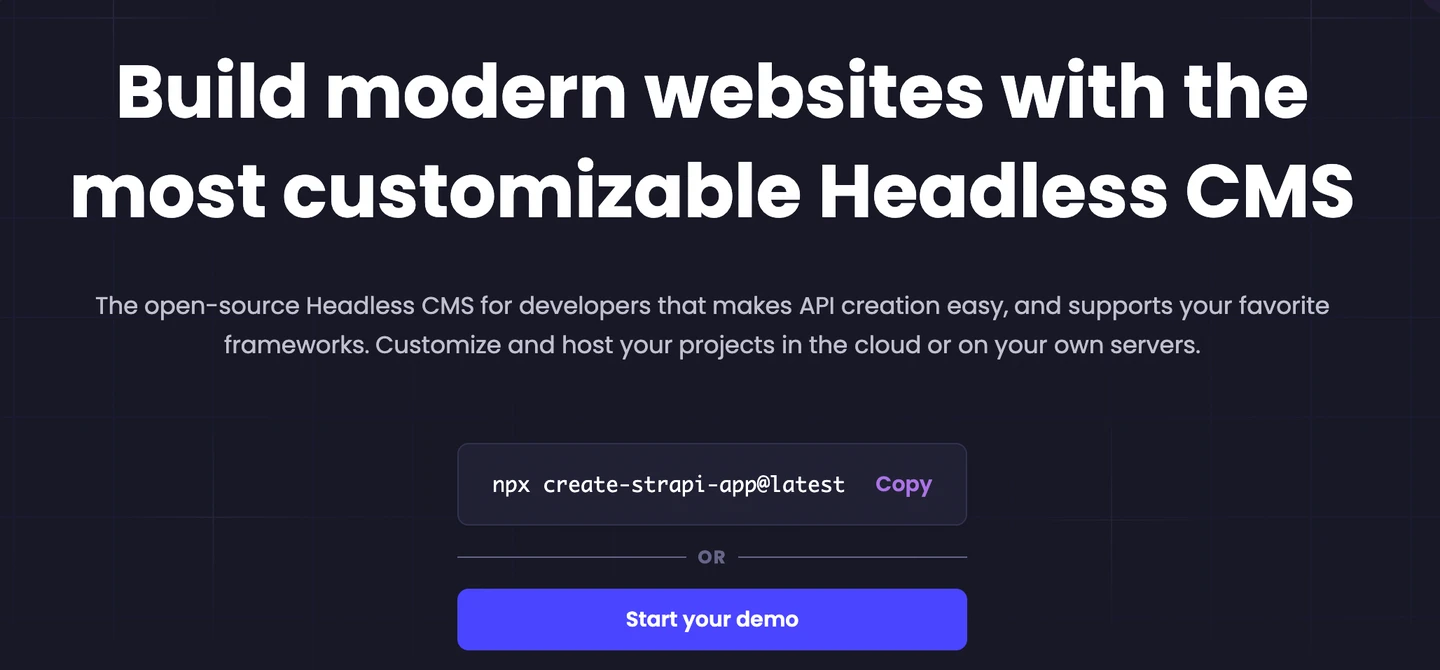
ButterCMS is a SaaS headless CMS built with developers in mind. It offers a quick setup, clean APIs, and built-in blogging features, making it suitable for smaller teams that want to add content management without heavy infrastructure.
Key features:
Best for: Startups and SMBs wanting a straightforward headless CMS for websites without heavy configuration.
Pros: Fast to implement with clean APIs.
Cons: Lacks advanced enterprise functionality.
Pricing: Entry-level plans start around $83/month; custom pricing for larger teams.

Ghost is an open-source publishing platform that can also run in a headless setup. It’s designed for content-first use cases like blogging, newsletters, and memberships, making it especially appealing to publishers and independent creators.
Key features:
Best for: Independent publishers and small teams looking for a lightweight headless CMS for websites.
Pros: Easy to use and affordable.
Cons: Limited in enterprise-level features and integrations.
Pricing: Starts at $9/month for basic hosting; scales with audience size.
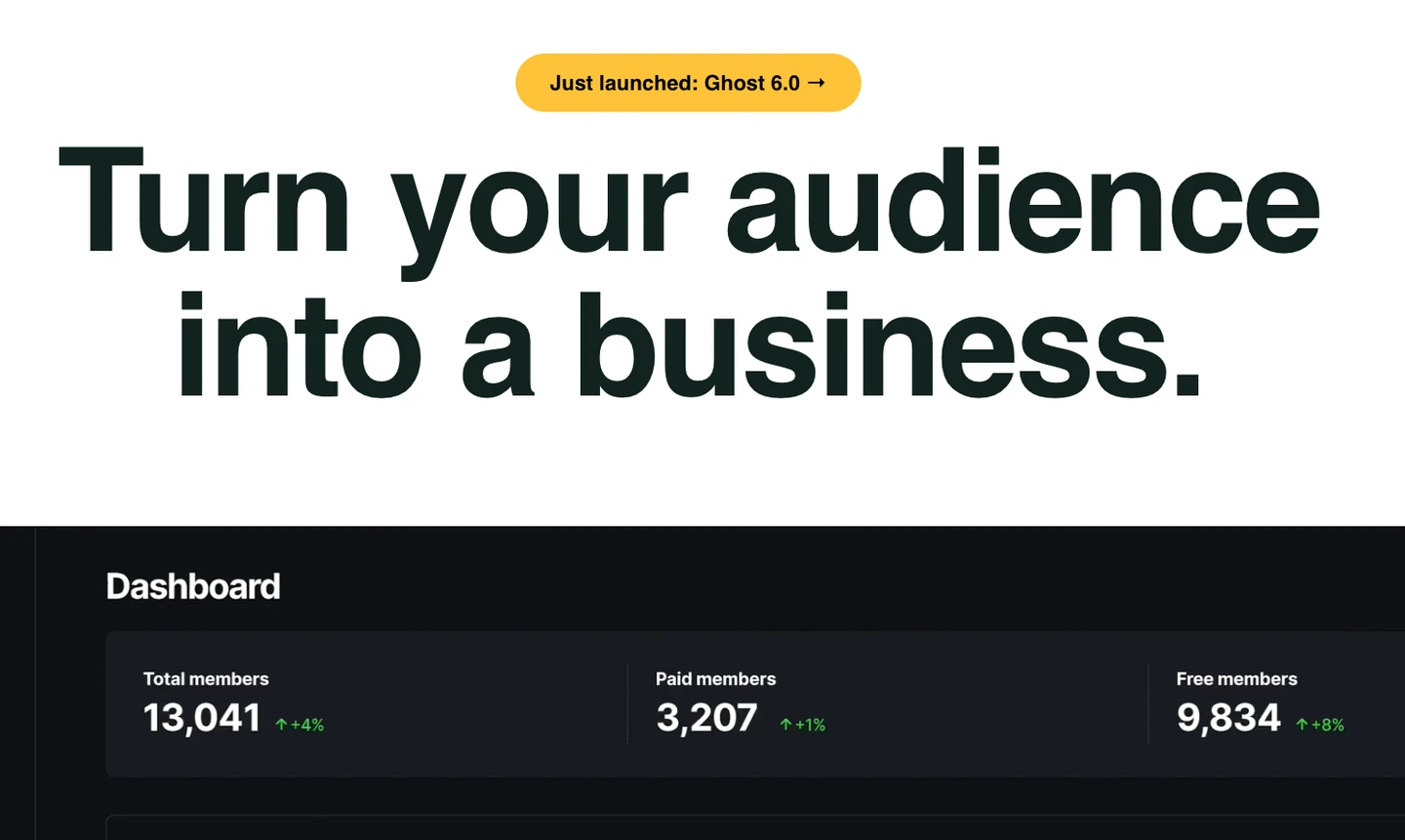
Prismic is a lightweight headless CMS that emphasizes simplicity and ease of use. With its slice-based content model, it can be a cost-effective choice for smaller businesses or development teams that need to get websites up and running without extensive configuration.
Key features:
Best for: Small to mid-size businesses and dev teams building content-driven websites.
Pros: Simple to use, affordable entry-level plans, strong developer docs.
Cons: Limited advanced features for enterprises, less flexible than competitors.
Pricing: Free starter plan; paid tiers based on seats and features.

Hygraph, previously known as GraphCMS, is a headless CMS built around GraphQL. It is a solid option for businesses that need to integrate content from multiple sources and deliver it through a unified API.
Key features:
Best for: Tech-savvy teams building modern applications with GraphQL.
Pros: GraphQL-native, great for composable architectures, advanced developer tools.
Cons: Steeper learning curve for non-technical users, smaller ecosystem than older platforms.
Pricing: Free developer plan; professional and enterprise pricing scale with usage.
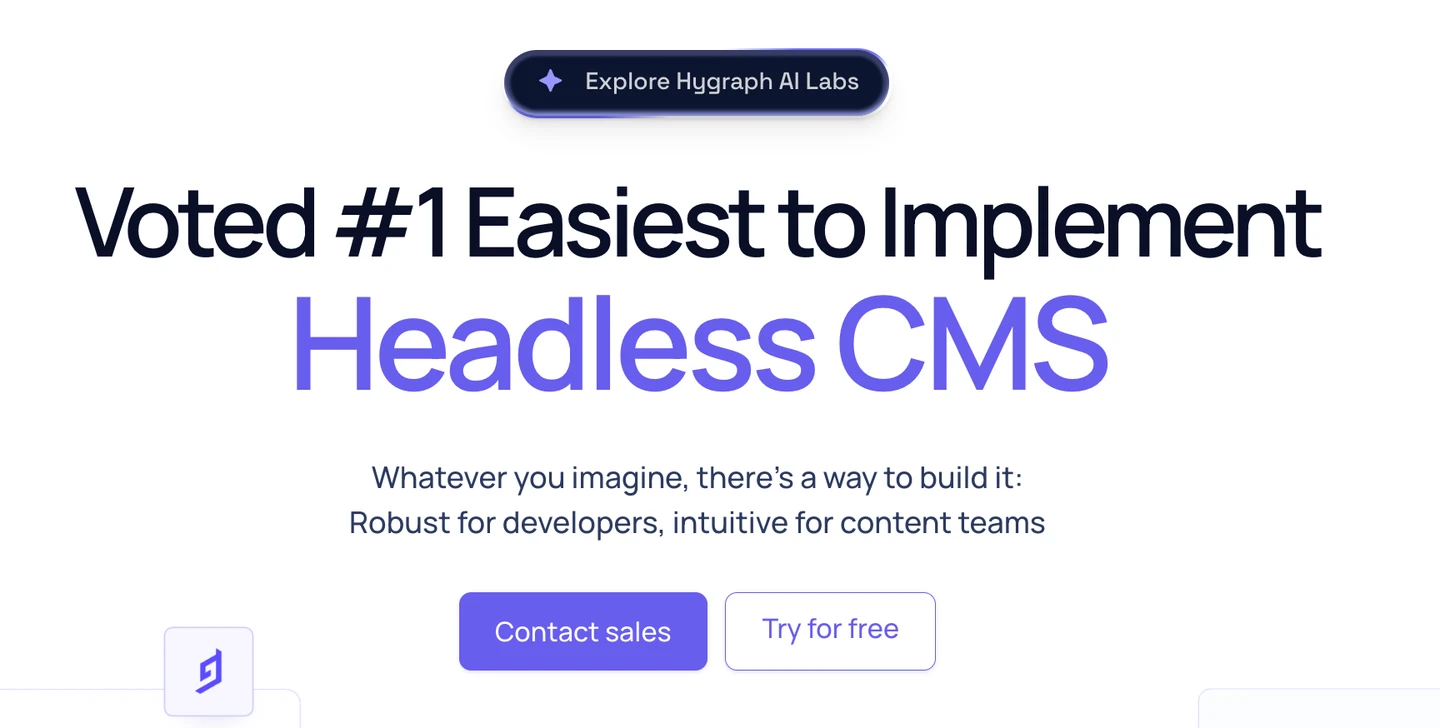
Amplience is a content and digital asset management platform built for ecommerce. It brings together structured content delivery and asset management in one system, helping retailers handle large volumes of content and media.
Key features:
Best for: Enterprise ecommerce teams managing large volumes of content and media assets.
Pros: Combines CMS and DAM in one solution.
Cons: Primarily focused on retail use cases and can be complex to adopt.
Pricing: Custom enterprise pricing; tailored to usage, storage, and integrations.
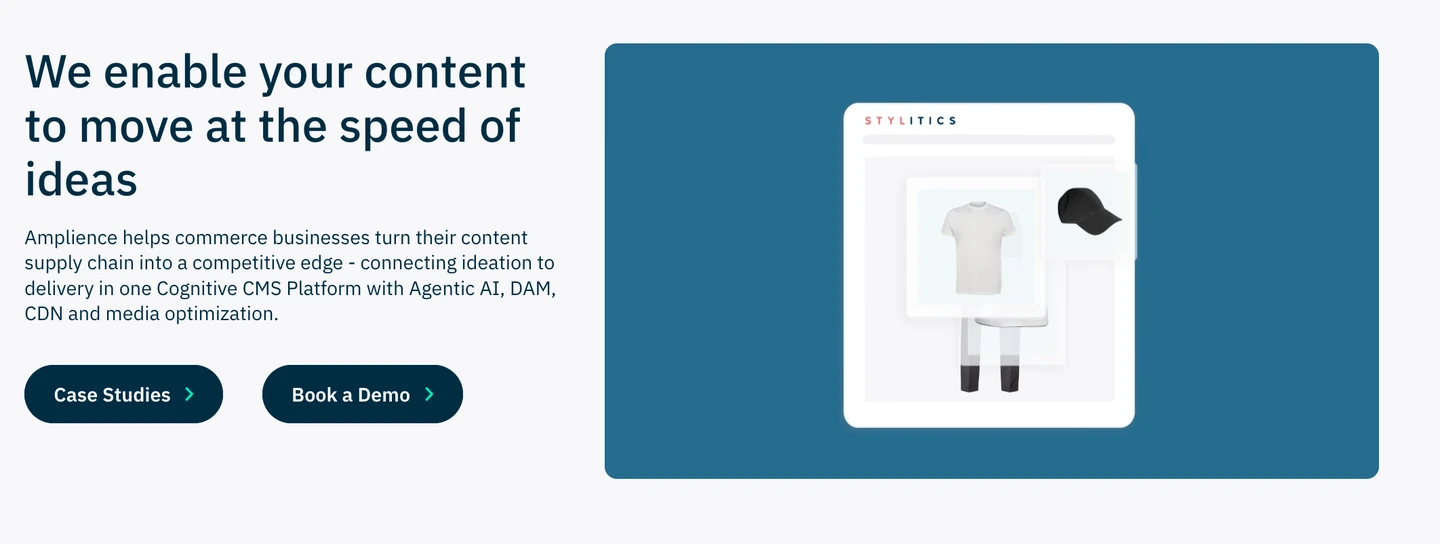
Bloomreach is an ecommerce experience platform that offers a headless CMS as one of its products. Their headless CMScombines content management with search and personalization. It is particularly focused on ecommerce, where unifying content and product data can improve the customer experience.
Key features:
Best for: Retailers and brands that want a headless CMS for commerce with integrated personalization and product data.
Pros: Strong commerce and personalization capabilities.
Cons: Less suitable for non-commerce use cases and often costly for mid-market companies.
Pricing: Custom enterprise pricing; typically targeted at large retailers.
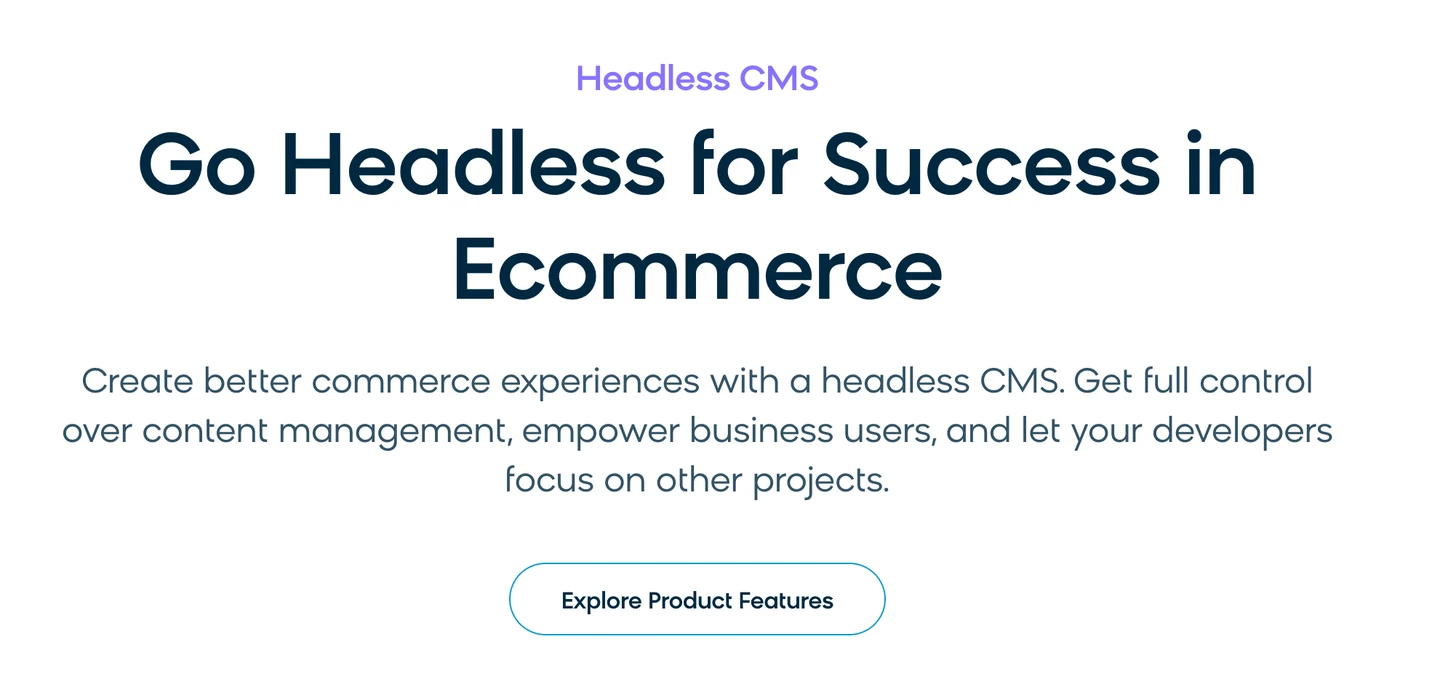
Magnolia is a headless CMS with roots in enterprise content management. It combines traditional authoring tools with API-first delivery, giving enterprises a way to support both website management and modern omnichannel content needs.
Key features:
Best for: Large enterprises that want a mix of traditional CMS authoring and modern headless delivery.
Pros: Strong personalization and governance tools.
Cons: More complex to set up and maintain compared to leaner headless CMS platforms.
Pricing: Custom enterprise pricing based on implementation scale and features.
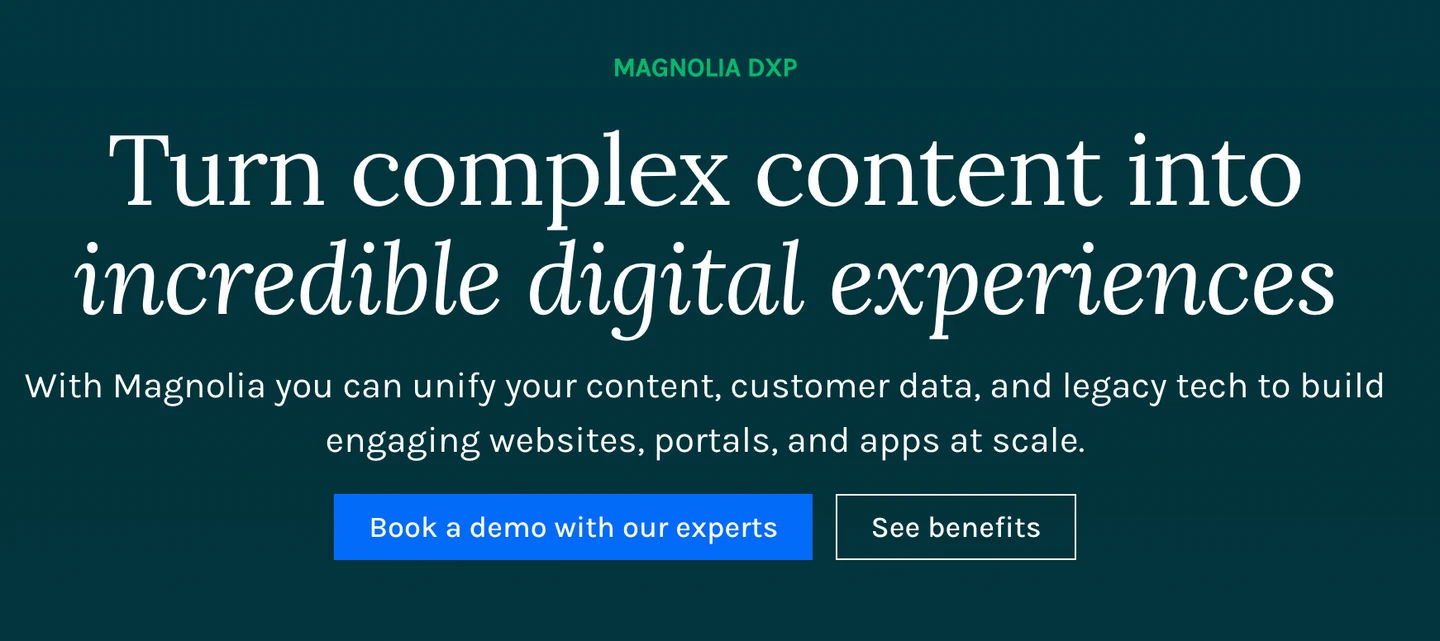
Storyblok is a headless CMS that prioritizes the editor experience. With its visual editor, it offers marketing teams more independence, while still providing developers with the flexibility to build custom front ends. This makes it a suitable option for organizations balancing technical and non-technical users.
Key features:
Best for: Marketers and content teams who want visual editing combined with headless flexibility.
Pros: Strong editor tools, easy onboarding, good for multi-language sites.
Cons: Less developer freedom compared to open-source options; pricing can rise with scale. Storyblok users on G2 often report poor customer support, unresolved bugs, and weak documentation. For some, the platform lacks flexibility requiring extra development effort to make it production-ready.
Pricing: Free tier available; business and enterprise plans priced by usage and seats.
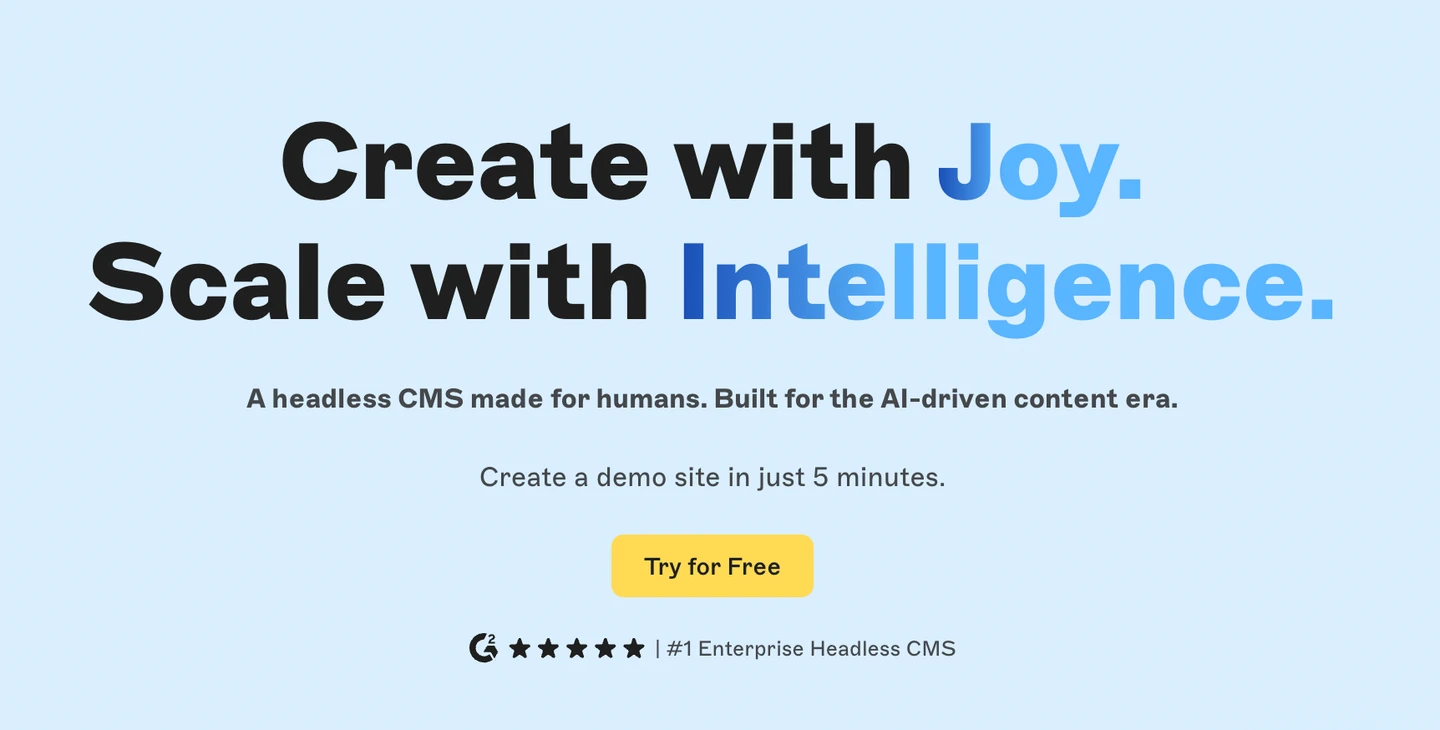
Sanity is a fully customizable all-code backend, with a strong emphasis on real-time collaboration and customization. It can be a practical choice for teams that value structured content delivery but also want to tailor the editing environment to match their workflow.
Key features:
Best for: Developer-focused teams that need flexibility with a modern, collaborative editor experience.
Pros: Highly customizable, great for structured content, and collaborative workflows.
Cons: Can be complex for beginners, and advanced features may require dev support. Users on G2 also mention limited default features, outdated documentation, and a basic interface that often requires extra development work. Confusing environment setup and slow caching add to the challenges.
Pricing: Free tier for individual projects; paid plans scale with usage and API calls.

Contentful is one of the most widely recognized headless CMS platforms, often used by large enterprises and global brands. It can be a strong option for organizations that need a centralized content hub and are willing to invest in enterprise-level infrastructure and pricing.
Key features:
Best for: Large enterprises and teams with complex omnichannel needs.
Pros: Mature platform, strong scalability, wide community support.
Cons: Can be costly as usage scales, steep learning curve for small teams. Users on G2 also add that it can be clunky, complicated and with UI that is very complex for content editors. In addition, some comment on bad support and inability to scale well despite being intended for enterprises.
Pricing: Free tier for small projects; enterprise pricing is custom and often premium.
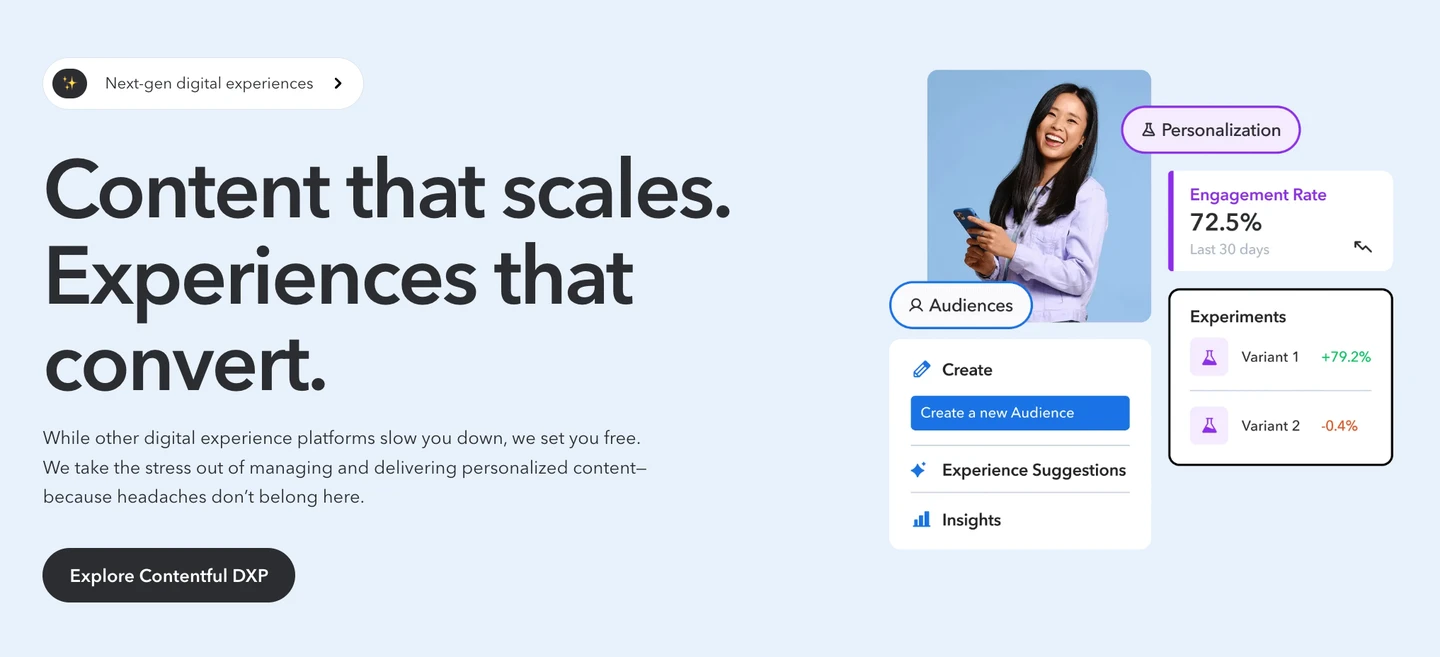
Contentstack is a digital experience platform primarily aimed at organizations who need ecommerce and personalization solutions built into the platform. It emphasizes reliability, integrations with enterprise systems, and strong SLAs, making it a great choice for large organizations with complex digital ecosystems.
Key features:
Best for: Enterprises needing scale, compliance, and global operations.
Pros: Robust governance, reliable SLAs, strong partner ecosystem.
Cons: Pricing is on the higher side; it might be more than smaller teams need. Users on G2 also add that UI clunky and unintuitive, especially for new users. Publishing can be slow, and the editor lacks some basic features and reporting options, which can make content management feel cumbersome without custom plugins.
Pricing: Custom enterprise pricing; no long-term free tier for production.
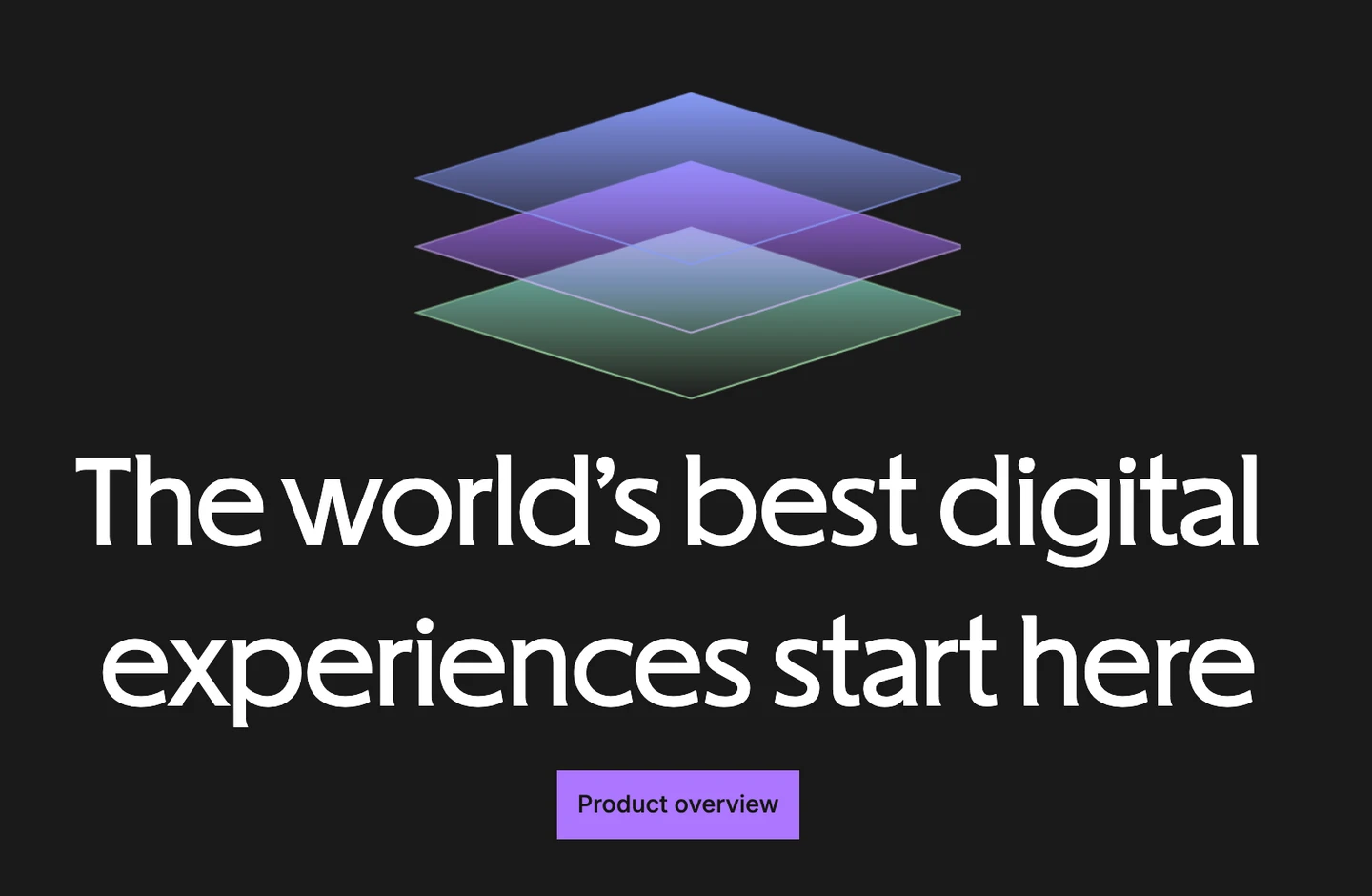
Shopify Plus is the enterprise version of Shopify with optional headless capabilities. It allows brands to keep Shopify’s commerce engine while delivering storefronts through custom APIs.
Key features:
Best for: Fast-growing ecommerce brands exploring headless CMS for ecommerce while keeping a robust commerce backend.
Pros: Reliable commerce platform with a vast ecosystem.
Cons: Limited in CMS features; costs can rise with add-ons and transaction fees.
Pricing: Starts at around $2,000/month; headless builds add customization costs.
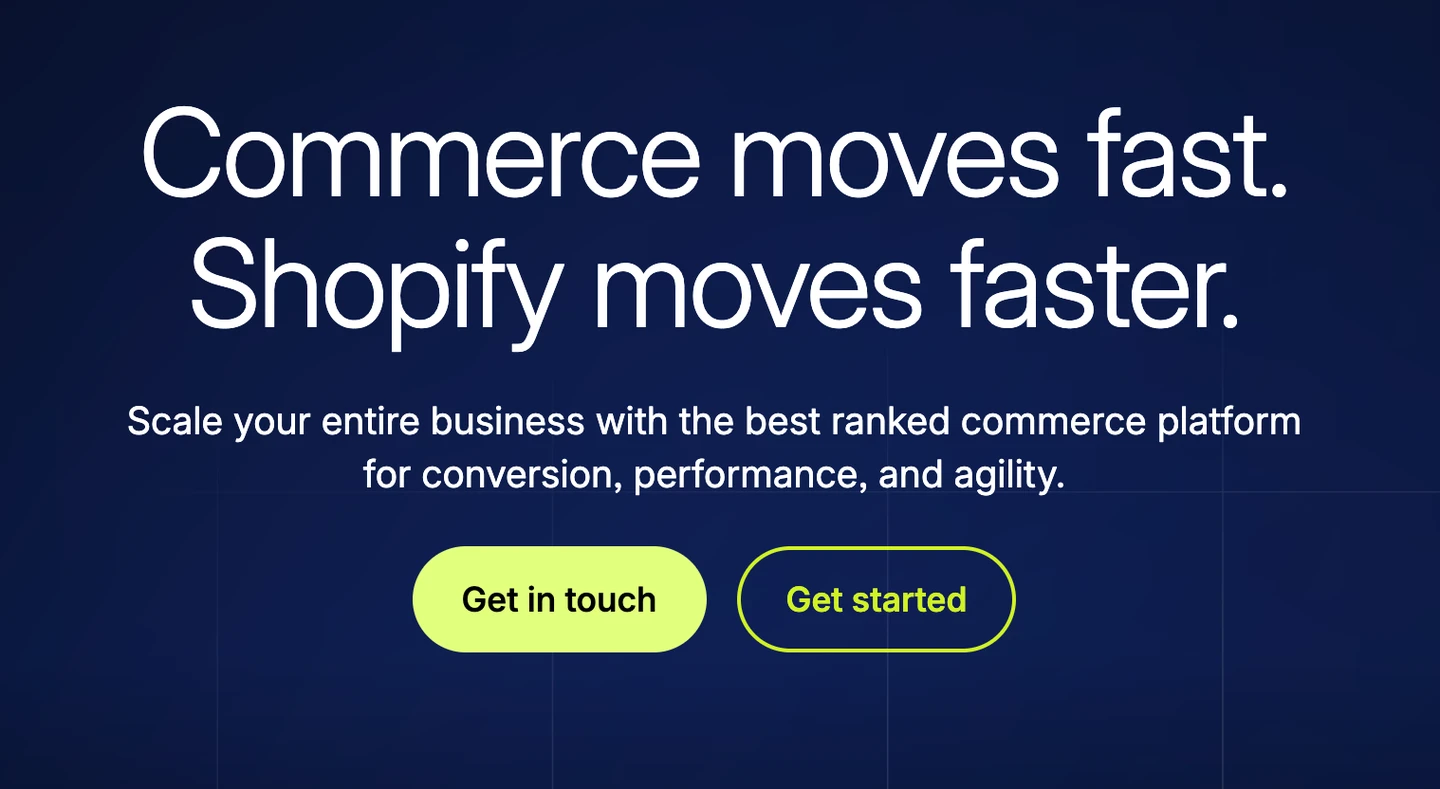
BigCommerce is an ecommerce platform that offers API-driven headless capabilities. It is often chosen by mid-market and enterprise retailers who want flexibility without building everything from scratch.
Key features:
Best for: Mid-market and enterprise retailers looking for flexible headless commerce at a competitive cost.
Pros: Strong B2B and API-driven capabilities.
Cons: Less intuitive for smaller teams; some enterprise features need customization.
Pricing: Plans start at $39/month; enterprise pricing is customized.
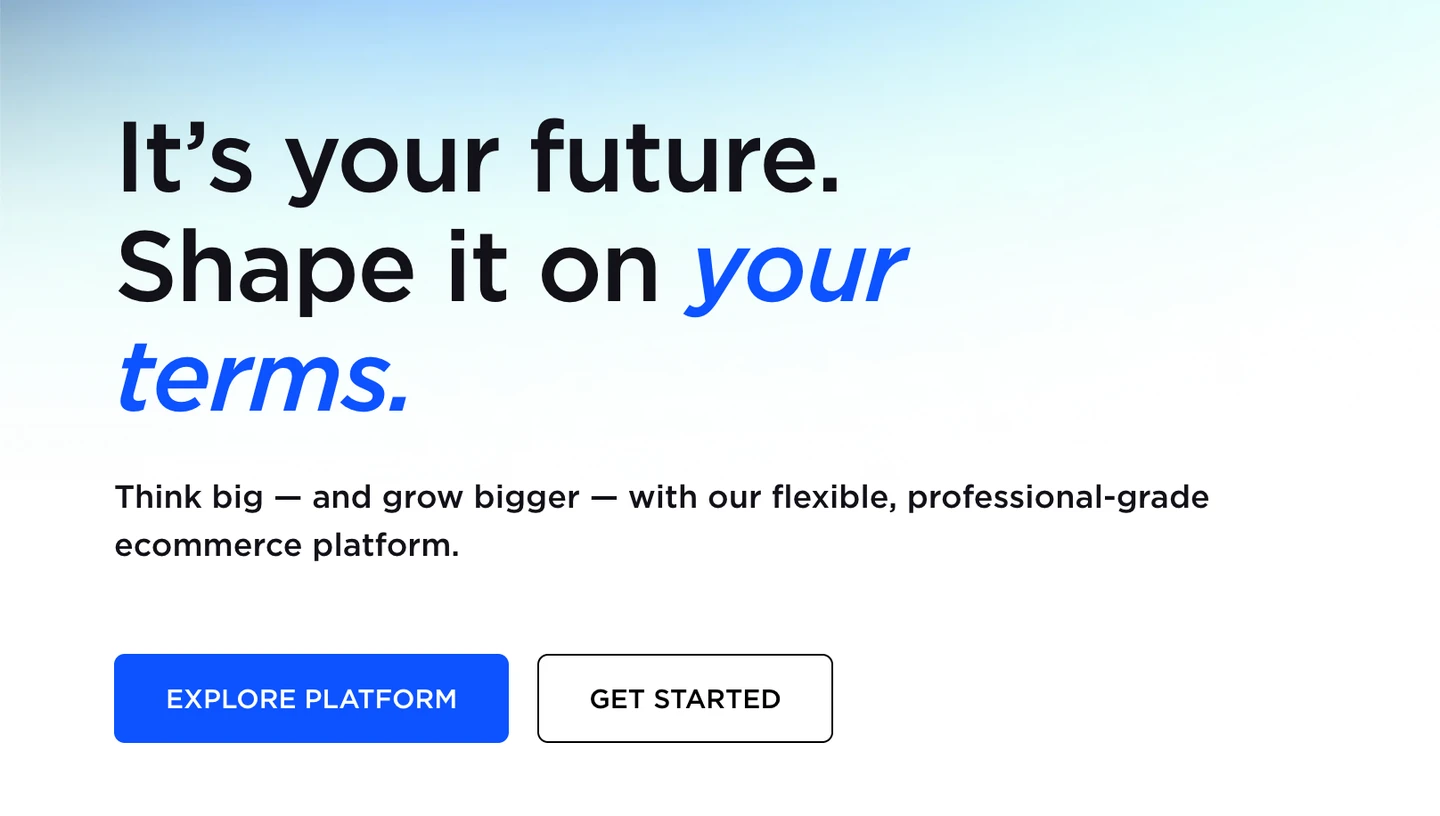
Adobe Commerce, powered by Magento, is a customizable commerce platform with headless capabilities. It is often adopted by enterprises with complex product catalogs and global operations.
Key features:
Best for: Large enterprises with complex catalogs and development resources.
Pros: Highly customizable with robust ecommerce functionality.
Cons: Requires significant developer investment and carries high total ownership costs.
Pricing: Pricing is custom, typically based on licensing plus fees; hosting adds further costs.
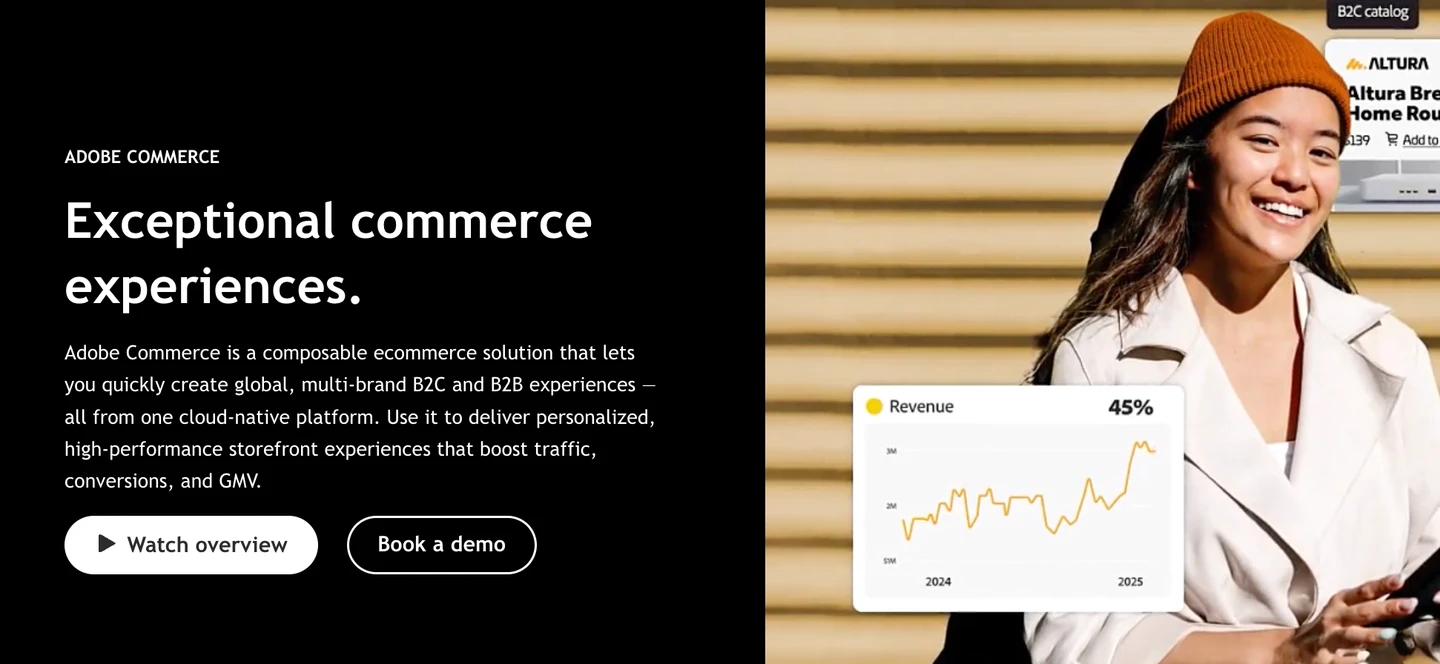
Salesforce Commerce Cloud is a cloud-native commerce platform that integrates with the Salesforce ecosystem. It supports global brands seeking to unify customer data, marketing, and commerce in one system.
Key features:
Best for: Enterprises already using Salesforce that want commerce tied closely to CRM and marketing.
Pros: Seamless ecosystem integration with strong AI features.
Cons: Expensive and complex for smaller businesses.
Pricing: Custom enterprise pricing; generally based on licensing plus fees.
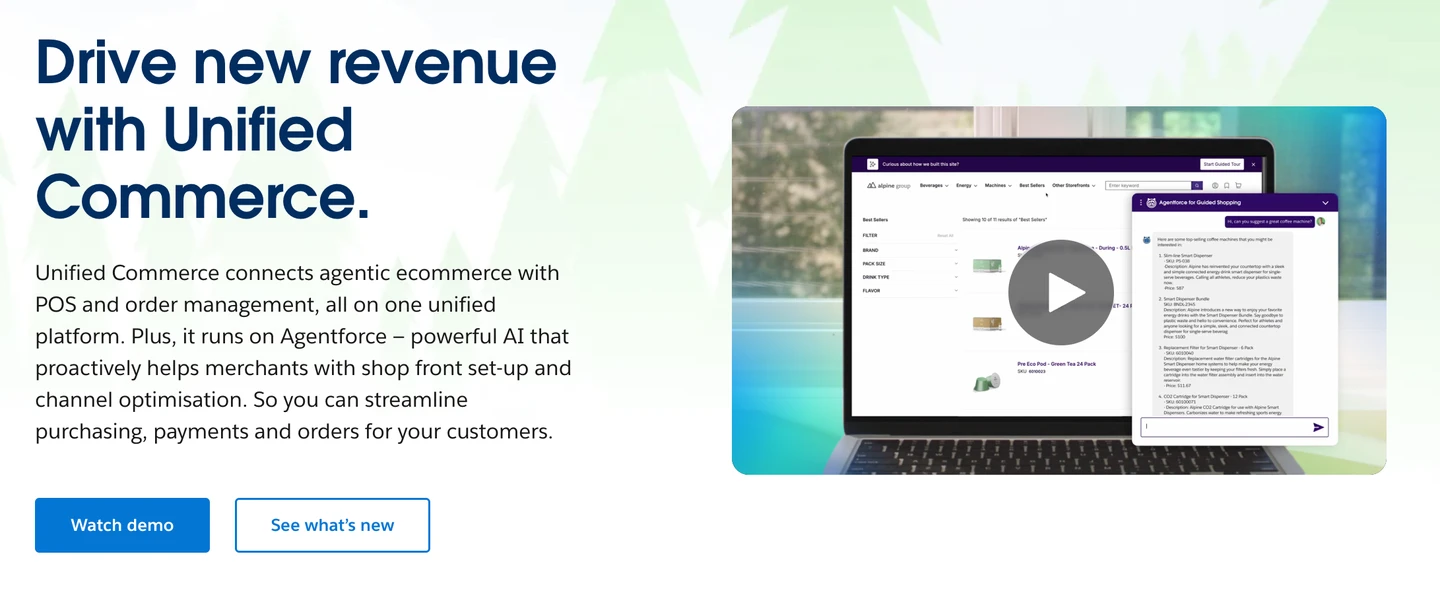
Wix Headless is an extension of the Wix website builder that enables API-driven delivery. It combines Wix’s ease of use with developer tools, offering a lower-barrier entry into headless CMS solutions.
Key features:
Best for: Small and mid-sized businesses exploring headless CMS for websites while keeping Wix’s simplicity.
Pros: Affordable and accessible with visual tools.
Cons: Limited scalability and features compared to enterprise-level headless CMS systems.
Pricing: Standard Wix plans start at $16/month; pricing for headless varies with usage.
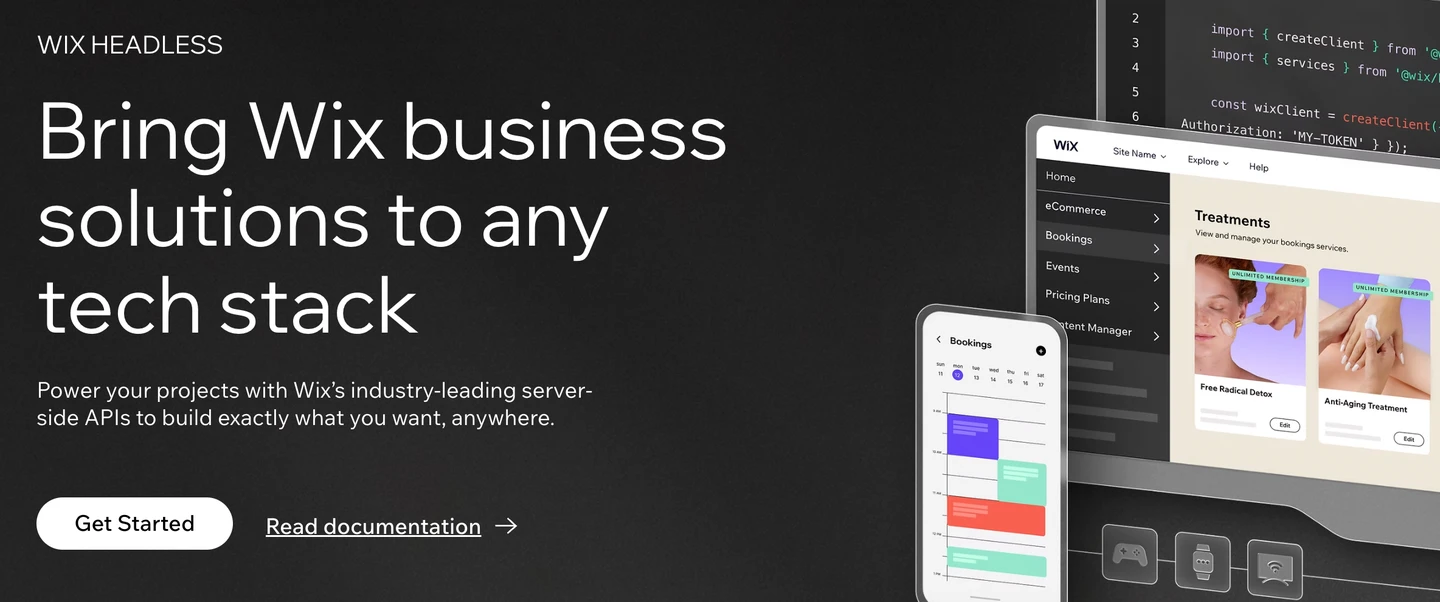
Scroll horizontally to see more →
Scroll horizontally to see more →
Choosing the right CMS depends on your team, business size, and digital strategy. A clear CMS comparison can help you identify which platform is most suitable for your needs. Here’s a breakdown of best CMS platforms by use case.
For ecommerce, flexibility, scalability, and integration with commerce platforms are critical. Headless technology allows you to deliver product content and promotions seamlessly across web, mobile, and other channels. Platforms like:
Stand out for multi-channel retail, personalized shopping experiences, and API-first architectures. These solutions often overlap with digital experience platforms (DXP) that unify product, content, and personalization.
Enterprises need a CMS that supports complex workflows, multiple teams, and global multi-language content.
are strong options, providing scalable APIs, robust governance, and integrations with CRM, DAM, and analytics. Choosing a modern headless CMS or decoupled CMS helps future-proof content strategy while supporting omnichannel delivery.
Small and mid-sized businesses benefit from easy-to-use platforms with quick setup and low maintenance.
provide simple APIs, visual editors, and cost-effective subscriptions. These solutions let SMBs implement a modern CMS without heavy technical resources while still supporting web and mobile content delivery.
Developer-focused teams need flexibility, open APIs, and customization options.
provide developer-friendly environments, API-first architectures, and modular content structures. They are ideal for agencies building multiple client sites or developers exploring headless technology and the future of CMS.
Marketing teams benefit from platforms that combine structured content with ease of use, workflows, and personalization.
allow marketers to create, edit, and schedule content without constant developer support. These tools are often part of a broader digital experience platform (DXP), supporting omnichannel campaigns while maintaining brand consistency.
Choosing the right CMS depends on your business size, goals, and tech stack. Based on our CMS comparison and review of best CMS platforms, here are tiered recommendations to help you decide:
These platforms provide robust headless technology, scalable APIs, multi-language support, and governance features. Ideal for large teams managing complex workflows, multi-channel campaigns, or looking to implement a digital experience platform (DXP).
Flexible and developer-friendly, open-source modern CMS options allow you to fully customize content structures and integrate with any tech stack. Great for teams that want control over infrastructure and APIs without licensing costs.
These platforms offer visual editors, workflow management, and collaboration tools, letting marketing teams create, update, and personalize content without waiting on developers. They strike a balance between usability and advanced headless CMS benefits.
Combining developer flexibility with marketer-friendly tools, it’s suitable for enterprises, mid-sized companies, and multi-channel digital initiatives. Supports future-proof strategies and works well as a modern CMS for websites, apps, and ecommerce.
By aligning platform capabilities with your business needs, you can select a CMS that maximizes efficiency, improves content delivery, and supports growth across channels.

What if we told you there was a way to make your website a place that will always be relevant, no matter the season or the year? Two words—evergreen content. What does evergreen mean in marketing, and how do you make evergreen content? Let’s dive into it.
Lucie Simonova

How can you create a cohesive experience for customers no matter what channel they’re on or what device they’re using? The answer is going omnichannel.
Zaneta Styblova

To structure a blog post, start with a strong headline, write a clear introduction, and break content into short paragraphs. Use descriptive subheadings, add visuals, and format for easy scanning. Don’t forget about linking and filling out the metadata. Want to go into more detail? Dive into this blog.
Lucie Simonova
A headless CMS separates content from the presentation layer entirely, delivering content via APIs to any channel. A decoupled CMS still has a front-end but allows content delivery through APIs as well.